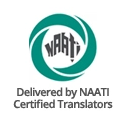Filipino, the national language of the Philippines, boasts a fascinating history unlike many others. It’s not a completely new language, but rather a standardized version of Tagalog. You will most likely hear this in Metro Manila and surrounding areas.
However, Filipino’s story goes far beyond Tagalog. It incorporates elements from various Philippine languages like Cebuano, the dominant language in the Visayas region, Kapampangan spoken in central Luzon, and Hiligaynon prevalent in Western Visayas. This approach ensures Filipino reflects the archipelago’s rich linguistic landscape. Which, in turn, creates a truly national language that resonates with people across the islands.
Filipino’s vocabulary is a testament to the Philippines’ long history of cultural exchange. Centuries of Spanish rule left an undeniable mark, with loanwords like “mesa” (table), “libro” (book), and “presidente” (president) seamlessly integrated into everyday speech. Arabic traders also played a role, with words like “suwerte” (luck) and “guhit” (drawing) enriching Filipino expressions.
Even American influence can be heard in recent decades, with terms like “basketball” and “komiks” (comics) finding a place in the Filipino lexicon. This constant borrowing reflects the Philippines’ openness to interaction with other cultures, with each word acting as a historical marker.
The Pillar of Filipino Culture
Filipino isn’t just a language; it’s the soul of Filipino expression. It flows through captivating novels by legendary authors like Jose Rizal, whose “Noli Me Tangere” sparked Philippine nationalism. Renowned modern writers like Linda Ty Casper weave poignant stories in Filipino that resonate deeply.
Beyond literature, it is the foundation for the “Kundiman” music genre, comprising of heartfelt ballads in Filipino. It’s also heard in the rhythmic chants that accompany folkdance “tinikling,” where dancers showcase impressive footwork and agility while maneuvering between tapping bamboo poles.
Characteristics of Spoken and Written Filipino
Filipino utilizes the Latin alphabet with a few additional characters, like ñ (pronounced “ny”), to represent unique sounds absent in English. Unlike some languages with complex consonant clusters, Filipino’s sound system is relatively simple.
Connecting Global Communities
Filipino isn’t just spoken across the Philippine islands. Over 100 million people worldwide speak Filipino, within communities thriving in countries like the United States, Canada, Saudi Arabia, and across the Middle East.
This global presence is a testament to the enduring strength of Filipino culture and the diaspora’s dedication to preserving their linguistic heritage. Filipino communities host cultural events, language classes, and even Filipino-language media to keep their connection to their roots strong.
A Bright Future
While English enjoys dominance in some domains like business and academia, Filipino’s future remains bright. The Philippine government actively promotes its use in education, media, and government administration. The Komisyon sa Wikang Filipino (Commission on the Filipino Language) plays a vital role in developing, regulating, and promoting Filipino. They work to ensure it remains relevant in the digital age.
Our Translation Services
At TranslateSwift, we understand the importance of clear and culturally sensitive communication across languages. Our team of Filipino-speaking linguists offers exceptional translation services. Whether you need business documents, student diploma or marriage certificate translated, TranslateSwift is here to help you navigate the nuances of the language and bridge the cultural gap.
